Communities Urgently Need Clean Water. Here’s How We Can Provide It.


When the COVID-19 virus reached the southern region of Brazil, widow Dona Terezinha, 64, who lived with her grandson Willian in a rented home without a water connection, was confronted with a potentially life-threatening problem – how could she keep her family safe without access to clean water?
“Without water at home, it was very difficult,” she says. “There was no place to wash our hands and we had to use my neighbor’s bath at the risk of getting Covid-19 from other people.” Without water, Dona Terezinha and Willian were at great risk of exposure to the novel coronavirus and other illnesses.
A microloan was Dona Terezinha’s solution to her family’s water crisis. By financing an in-house water tap, she was able to give her family immediate access to safe and clean water at home, ending their water crisis now and ensuring they will have water long after the threat of COVID-19 is gone.
The pandemic has made clean water more critical than ever, yet the number of people who do not have access to this fundamental resource is staggering. Globally, more than 785 million people lack access to water, and in Latin America, more than 177 million people don’t have water at home. In Brazil, where Dona and Willian live, 3 million people don’t have access to water and 24 million lack access to improved sanitation, further inhibiting people’s ability to stop the spread of life-threatening diseases.
And the impact of limited access to clean water has further-reaching consequences than its impacts on health and safety. Every day, women and children around the world spend 200 million hours collecting water. Without that burden, imagine the impact on families, communities and economies if that time could be freed up. It would help unleash their inherent power and potential.
The world needs investments in innovative, scalable solutions that expand water access to benefit women, children and their communities. To do this, we must prioritize alliances with expert partners on the ground to create programs that attract sustainable sources of funding to help ensure long-term solutions for local communities. Partnerships need to look beyond financing to tap into each organization’s strengths – including technical expertise, capacity building, education and community programs – to maximize impact in high water-risk communities and achieve lasting systemic change.
We speak from experience – PepsiCo and Water.org have worked together for more than a decade on programs that empower people living in poverty with affordable, lasting access to safe water. And we’ve seen firsthand the positive ripple effect that comes from well-built programs. In Brazil, a new program to provide 15,000 loans, technical assistance and capacity building to families will help establish water systems that are lasting, dependable, and cost-effective. The program will directly benefit 52,000 people like Dona Terezhina and Willian, whose story reminds us of the value of water.
For Dona Terezinha and millions of women like her, access to clean water can turn problems into potential. When women are freed from the burden of water collection, they can focus on education, economic opportunities and improved health for themselves and those around them.
Securing safe water for families in need around the world must be an urgent priority for organizations that have the resources to make a meaningful impact. It’s a ripple effect, and it starts with one woman, one family and one community at a time.
Image credit: Water.org
Infinitely Recyclable Plastic on the Horizon with Next-Gen Polymers
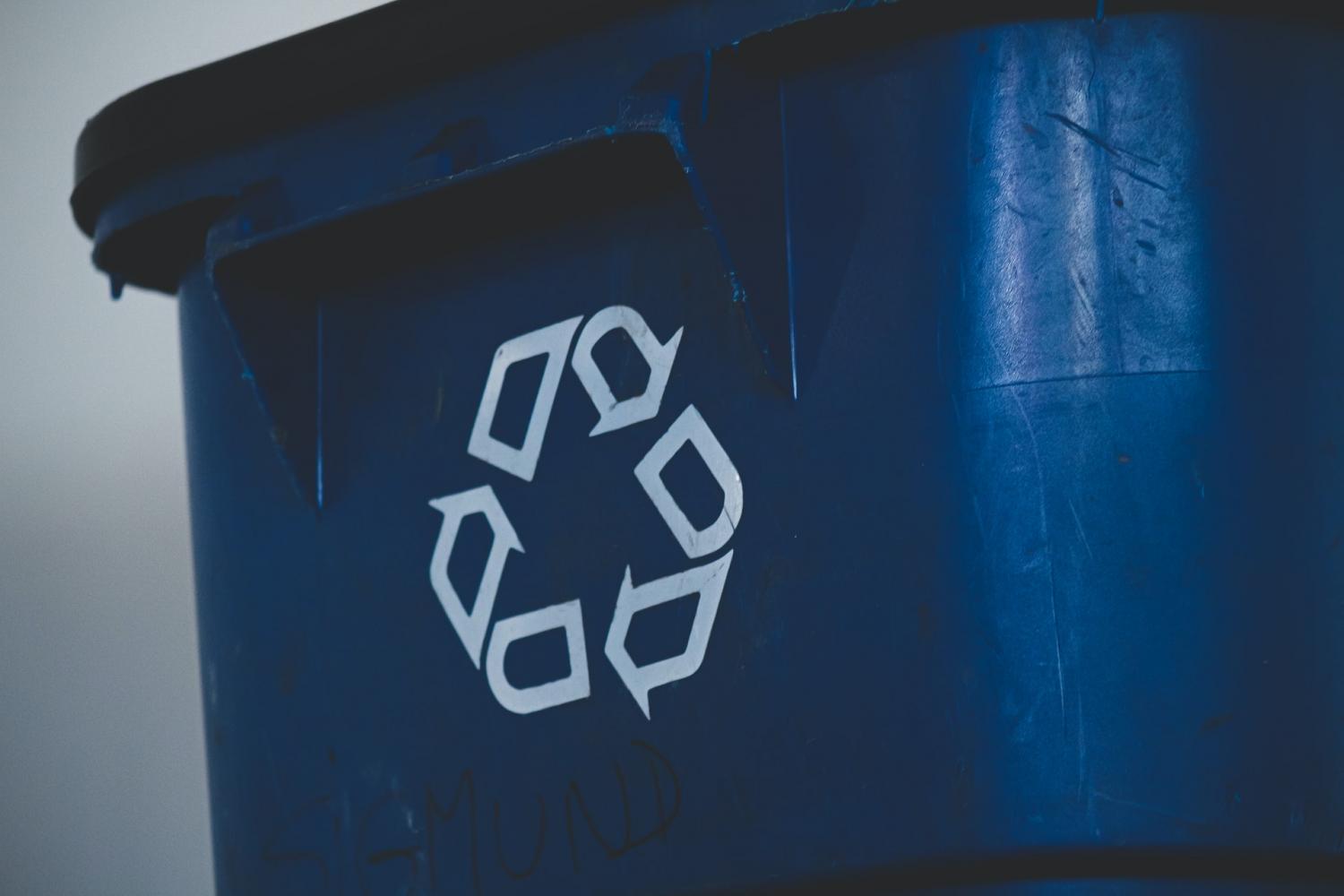

We humans are addicted to an almost indestructible substance that is all around us. Globally, humans create 380 million tons of plastic annually. Despite the recycling symbol on the bottom of any such package, the vast majority of plastics end up in landfills, waste incineration plants or our oceans. Numerous problems have long plagued what manufactures call recyclable plastic - but there is hope on the horizon.
A team at Lawrence Berkeley National Labs created a new plastic called poly(diketoenamine), or PDK, that is truly recyclable. After first issuing a report on it two years ago, this month Berkeley Lab released a study that concludes PDK-based plastic could be an economically viable alternative for companies.
What’s the problem with conventional plastic?
Plastics were not designed with recyclability or producer responsibility in mind. Despite our best intentions, only 8.7 percent of plastic is recycled in the United States, meaning the vast majority ends up in landfills, incinerators, or as litter. Despite the numbers and arrows on the bottom of packages, recycling facilities simply don’t process many of the what consumers assume are recyclable plastic containers that line grocery store and drugstore shelves. Now, micro-plastics are in the food we eat, the water we drink, and even in rain and snow.
Sadly, plastic recycling is not economically viable, and the cost falls largely on local governments in the United States. Virgin plastic is often cheaper and easier to produce than recycled plastic, creating little economic incentive for manufacturers. Even in the best-case scenario, manufacturers can only recycle plastic two to three times before it becomes unusable.
That is precisely why these next-generation polymers could be a game-changer. Berkeley Lab researchers set out to create an endlessly recyclable product instead of considering this as an afterthought. However, one of the significant issues will be making this product financially viable to get manufacturers to switch over.
How does PDK plastic stack up?
The Berkeley Lab study examines a simulation for a facility that puts out and recycles 20,000 metric tons of PDK annually. The authors estimated the chemical inputs, necessary technology, costs and emissions, and then compared their results with the production of conventional plastics.
According to Berkeley Lab, PDK recycling costs are similar to PET and HDPE and less than polyurethane recycling.
The cost of the virgin material is more costly, offering a true market incentive for recycling. The PDK resins are recycled using acid rather than heat, which separates the resin from additives. Unlike conventional plastics, manufacturers can use recycled PDK resin for new products with no loss of quality. This will allow consumers to truly complete the recyclable plastic loop, which is often the missing component in many waste management systems.
An uncertain future for recyclable plastic
Much of the plastic burden doesn’t fall on companies because for years, many regions have not held producers responsible. Public concern for the use of fossil fuels and plastic pollution, particularly in the oceans, is mounting. Because the cost of virgin plastic is so low and most producers aren’t paying the actual cost of plastic (especially when considering social and environmental implications), policies are needed to create an incentive for manufacturers to shift to more responsible and recyclable plastic like PDK plastic.
Also, it is essential for the new material to also be optimum for a variety of uses. According to the recent Berkeley Lab study, “The properties of PDKs can be tailored through formulation to render them suitable for use in a wide range of applications, including flexible packaging for food and beverage, heat- and fire-resistant composites for consumer electronics, vehicle and aircraft parts, wind turbine blades, and energy-efficient buildings.”
Although this news is all very promising, more crucial work is needed. “The questions are how much it will cost, what the impact on energy use and emissions will be, and how to get there from where we are today,” says Brett Helms, a staff scientist at Berkeley Lab’s Molecular Foundry. “The next phase of our collaboration is to answer these questions.”
While we’re reading about recyclable plastic, here’s a reminder: Please join us on Wednesday, June 2 at 1 p.m. ET/10 a.m. PT for the second edition of 3BL Forum: Brands Taking Stands – LIVE! We will explore how businesses can be part of a journey toward a plastic-free future. To view the speakers, agenda and to sign up and join at no cost, visit our event’s registration page.

Image credit: Sigmund/Unsplash
Achieving Inclusive Economic Growth Through Monumental Coordination: Organizing to Do Things Differently

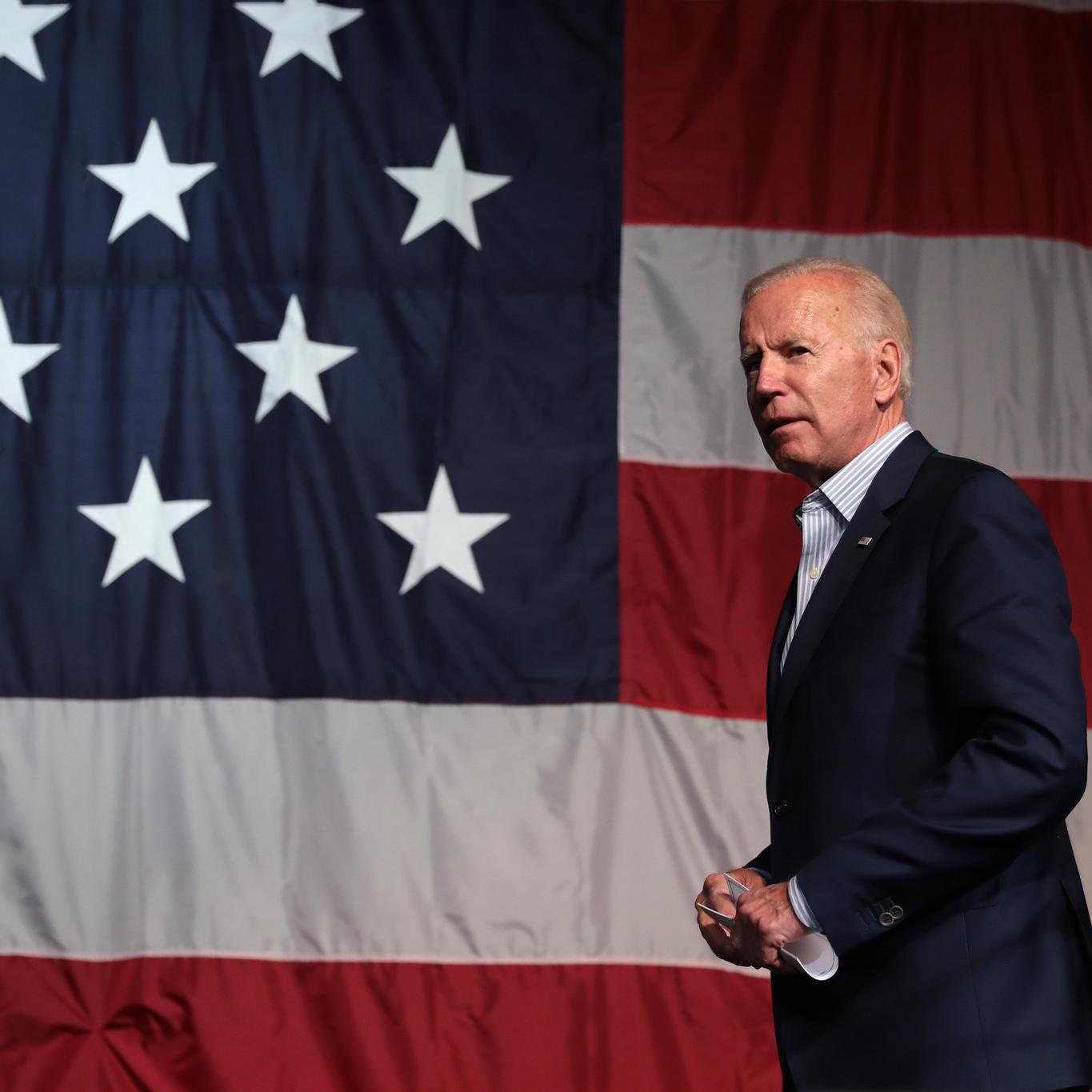
Structural change to our economy is possible, if we can get coordinated. That’s why over 50 of the nation’s most prominent impact-oriented organizations, funders and business coalitions have developed a joint proposal for a new White House Initiative for Inclusive Economic Growth.
Why the time for a focus on inclusive economic growth is now
Though some say the economy is “booming”, we know that these effects are not widely felt. Forces like shareholder primacy and other dogmas that have governed our economy for decades have pushed businesses, investors and markets to prioritize shareholder interests over workers, community and environment. Concurrently, historic atrocities and systemic racism have set the conditions for severe, racialized wealth inequality, which has increased dramatically in recent months. This has led economists to describe a “K-shaped” recovery post-recession, or what finance expert Eric Brotman describes as devastation for those who were more vulnerable prior to COVID-19.
Amidst the economic tragedy of this past year, and a growing sense of fear around a warming planet, a somewhat obvious truth has revealed itself: The longer we wait to address the compounding issues of inequity, environmental degradation, and community disenfranchisement, the worse these issues will become. Business leaders, policymakers, philanthropists and impact investors, united by the Biden-Harris administration’s call for coordination, are saying: We need serious economic reform.
That’s why so many cross-sectoral leaders are pushing for a new White House Initiative on Inclusive Economic Growth, including leaders like Darren Walker, president of the Ford Foundation, as well as political leaders like Senator Mark Warner (D-VA) and Representative Dean Phillips (D-MN).
As Andrew Kassoy, co-founder and CEO of B Lab describes it, “the Initiative will change the rules and incentives for decision-makers on Wall Street to refocus resources on underrepresented stakeholders on Main Street.” True inclusive economic growth focuses on two primary avenues for change: community investing and stakeholder capitalism.
Community investing is reparative for communities of color
Why community investing? The net worth of a typical white family is nearly 10 times greater than that of a Black family and eight times greater than that of a Hispanic family, a result of the legacies of slavery, racist housing policies, and significant barriers to wealth-building like owning businesses and home ownership.
To right these wrongs, we must significantly re-invest in communities of color and other marginalized sections of our economy. Nwamaka Agbo calls this approach restorative investing. At Common Future, we call it reparative investing, leveraging capital to help repair communities of color who have experienced extraction and marginalization for decades.
McKinsey estimates that closing the Black-white and Hispanic-white racial wealth gaps could boost the economy by $2 to 3 trillion, or 8 to 12 percent of the U.S. GDP.
A White House focus on inclusive economic growth would help catalyze a renewed focus on community investing by moving multiple agencies, regulatory bodies and Capitol Hill, in a concerted manner. For example, small business financing policy spans the SBA, The U.S. Treasury, CFPB and the Federal Reserve. The Department of the Treasury also oversees tax benefits and programs that support community investing, including the CDFI Fund, New Markets Tax Credits and Opportunity Zones.
Most importantly, an emphasis on inclusive economic growth will build alongside the lived expertise of community leaders who understand why our fragmented approach to community investing is failing minorities – which the U.S. Census has suggested will soon to be the country’s new majority.
This represents a significant break from the status quo. In early May of 2020, the SBA’s inspector general found that loan prioritization was not occurring in underserved communities, despite Congress’ intention to do so. Only recently, after engaging community-based and people of color-led organizations like those within the Page 30 Coalition, have federal dollars via the second round of U.S. Paycheck Protection Plan (PPP) dollars actually reached target communities.
The initiative, on the other hand, would look to new leadership, like AZ Local First and CA Forward—members of the Common Future network and leaders at the local level who have been doing this work for decades - to participate in these conversations, sharing new best practices around racial equity and financial inclusion.
Stakeholder capitalism to redefine whose interests matter most
The second leg of the initiative is focused on strengthening policies related to stakeholder capitalism - the notion that companies serve many constituencies, not just shareholders. If we’re to create broad-based prosperity for U.S. workers and communities, we must realize the immense opportunity for the wealth of companies to be shared.
To do so, the initiative plans to engage a range of economic policy issues, already identified by the Biden-Harris administration. Each of them requires coordination across both policy priorities and numerous government agencies, including corporate and capital markets disclosure and governance; systemic market risk that affects inequality, job quality, and climate change; oversight of stimulus and bailout funds; and climate finance.
While much of this can be accomplished by an executive order, the American Jobs Plan provides additional opportunity to ensure that projects and companies receiving government funding and incentives provide broader disclosure and accountability to the American people. Longer term, bipartisan legislation provides the opportunity to change the legal accountability of all corporations and investment fiduciaries to address their systemic impacts. An inclusive economic growth plan would help support and coordinate across these efforts.
Approaching change differently
As Senator Warner said, “Over the past couple of decades, we have seen the erosion of the American social contract for workers, a hyper focus on corporate efficiency at the expense of long-term resiliency, and an emphasis on short-term shareholder returns instead of long-term investments in innovation and communities.” These phenomena have led to significant instability and growth that is neither sustainable or inclusive. To make real change, we must look beyond what’s immediately in front of us and towards new solutions that have the potential to make significant impacts. A White House-led plan on inclusive economic growth would give us a platform to listen to new voices, acknowledge our shared problem, and start to rebuild together.
Image credit: Gage Skidmore/Flickr
Is Agriculture the Missed Opportunity in Climate Investment?


In this year of increased focus on climate action leading up to COP 26 UN Climate Conference in Glasgow, investors may be overlooking a sector ready to be harvested for its unique ability to fight the climate crisis - agriculture. In fact, some $972 billion flowing annually into the agriculture value chain could be channeled into transformative investment that would accelerate the adoption of climate-smart agriculture, according to a new report.
An untapped market
The report, from the U.S. Farmers and Ranchers in Action in partnership with The Mixing Bowl, the Croatan Institute and the World Business Council for Sustainable Development, looked at untapped environmental, social and governance (ESG) opportunities for investors in the global ag sector.
Agriculture is typically not a part of the $2 trillion invested and re-invested annually in ESG portfolios, the report showed; for example, in the third quarter of 2020 alone, there were $10 billion in corporate support for green bond issuance, but agriculture was not included. The reality, however, is that innovative financial mechanisms like green bonds and community finance could help farmers and ranchers tap into that capital.
There’s good reason to bridge the gap between the ag and finance sectors to help reach the climate goal set by the Biden administration last week to slash greenhouse gas emissions by 52 percent by 2030.
Climate-smart practices could cut GHG emissions from agriculture by half
By 2025, widespread adoption of climate-smart practices could reduce U.S. agriculture’s contribution to total U.S. GHG emissions by more than half, from almost 10 percent to 3.8 percent, the report found. It noted that these practices - which span nutrient application, manure management, and cultivation and grazing - are “sufficiently mature, both scientifically and in practice, to materially increase carbon storage if widely deployed in the U.S. and globally.”
What is missing is investment now and throughout the next decade to deliver on the potential of soils to be a key carbon sequestration solution and support resiliency for farmers and ranchers, according to Erin Fitzgerald, the CEO of USFRA.
“Just as the renewable energy sector benefited from renewable energy credits and tradeable credits, and innovative fintech strategies, the ag sector could benefit from the same approach. And investors benefit from a more diversified ESG portfolio,” Fitzgerald told TriplePundit.
Tackling the barriers to the digitization of agriculture
Technology is also going to play a critical role in scaling up climate-smart agriculture, according to Rob Trice, the founder of The Mixing Bowl, a forum that promotes the adoption of IT innovation in the food and ag industries. As noted in the report, “The digitization of agriculture may be the single biggest opportunity to meet farmers’ challenges and scale climate-smart soil practice adoption.”
There are barriers to taking advantage of that opportunity. They include the up-front costs to farmers to adopt climate-smart ag practices, as well as the price of carbon sequestration, and new technologies that can measure soil health.
“The question is, how can we make the cost-benefit of using these technologies workable for everybody, particularly the farmers and ranchers? A lot of the technologies have been less than mature. And so we need that investment to kind of get these things over the hump,” Trice told 3p.
Thinking creatively about new finance mechanisms
David LeZaks, a senior fellow and environmental scientist at the non-profit research organization Croatan Institute, explained during an interview with 3p “that additional capital that is appropriately structured can act as a catalyst as we go through these transformative shifts, While there is definitely a buzz around venture capital, the majority of capital flows to farmers via bond finance. Whether it be an individual using a crowd-funding platform or an institutional investor investing in the stewardship of real assets, there are ways to not only adapt the mechanisms that are used to flow capital to a more climate-smart agriculture, but also to attract more capital to the sector.”
Tim Crosby, Principal of the Thread Fund, which focuses on investing multiple forms of capital to generate social and environmental returns, and a member of the Transformative Investment in Climate-Smart Agriculture Working Group, said a large barrier is that federal payments, subsidies and incentives are so prevalent that they influence risk and stability of markets.
“About a third of a farmer’s income over the last three years has been from federal payments, to keep doing what we have been doing for decades. Add to that the use of food and agriculture in trade wars and you have two federal issues that create uncertainty of returns for any investor. And when you are addressing innovation in this arena, you will have a hard time raising capital,” he said.
Crosby added: “Because regenerative and climate-smart ag can be long-term plays, they do not match up with traditional ten-year funds… Additionally, food is taken for granted. This mirrors confusion among investors who do not really understand what they are investing in when they invest in production solutions that consider climate, water and farmer livelihood. Add it all up and aligned investments in these needed production models are therefore seen as high risk even though the highest risk investments we can make today are investing in business as usual.”
The time is ripe for a transformative investment in agriculture
Despite the challenges, Gray Harris, senior vice president of Coastal Enterprises, Inc. and a member of the Transformative Investment in Climate-Smart Agriculture Working Group, believes the time is right to leverage transformative investment for climate-smart agriculture.
“We are seeing a powerful convergence of economic forces that signal changes in our society,” Harris explained. She cited growing consumer demand for locally grown, healthy, fresh foods; the COVID-19 pandemic demonstrating that current food systems need to be more resilient, as 3p has reported, and the Biden’s administration moves to put the climate crisis and climate-smart agriculture at the center of the U.S. Department of Agriculture’s forward-going strategy.
“For a long time, many of us have regarded agriculture as one of the most innovative solutions to the climate crisis, with the potential to both sequester carbon and create new and diverse income streams for farmers. It will require a lot of financial capital investment to make this change happen, and it will require defining, or re-defining, what ‘transformative’ investment really is,” Harris said. “In our opinion, it will not look like traditional forms of investment capital that currently exist; in fact, the time is ripe for innovation in the investment tools and facilities that will meet the needs of farmers and foresters and investors alike.”
Image credit: Joel Holland/Unsplash
Automakers Banking On Solid-State Batteries for Sustainability


Legacy automakers are transitioning rapidly into the electric vehicle (EV) market, and they may have a secret weapon up their sleeve: sustainability. The next generation of high-efficiency, low-cost, long-range EV technology is on the horizon, in the form of new solid-state batteries. These new batteries are more compatible with the circular economy, providing fleet managers with new opportunities to lower their carbon footprints while appealing to the rising generation of climate-aware consumers and clients.
The EV revolution has only just begun
Rechargeable lithium-ion batteries are by far the most expensive part of an electric vehicle, typically accounting for 30 percent of overall costs. Cutting that cost while improving performance has been the main challenge for automakers, and they have been rising to meet it.
Costs have come down and performance has come up significantly over the past 10 years. However, this is the result of incremental improvements on the same basic technology, which is based on a liquid electrolyte.
Solid-state batteries replace the liquid with a high-tech ceramic material or other solid substance. In contrast to liquid electrolytes, solid electrolytes use more materials that are non-toxic, abundant, inexpensive, and recyclable, That creates radical new opportunities for engineering sustainability into the technology, while reducing costs and improving performance.
BMW hops on the solid-state batteries bandwagon
Though solid-state technology is generally regarded as superior to liquid electrolytes, as recently as 2017 it was still significantly more expensive.
However, the costs of solid-state batteries have come down since then. High-end auto makers can pitch performance to car buyers who are willing to spend more on brand names. They can also pitch sustainability, too.
BMW, for example, is keenly aware of the importance of overall sustainability in EV marketing. The company anticipates that savvy car buyers will not be satisfied with the zero-emission status of electric drive. They will also be looking at lifecycle and supply chain impacts.
Last week, BMW announced that it will use solid-state energy storage technology for its “Neue Klasse” lineup of electric vehicles. The primary aim is to deliver vehicles that can go toe-to-toe with conventional internal combustion engines on cost and performance. BMW also zeroed in on overall sustainability as an additional benefit.
“We want to significantly increase the energy density of the cells and reduce the costs of material use and production at the same time. We will also significantly reduce the use of primary material to ensure a truly 'green' battery,” explained Oliver Zipse, BMW AG’s Chairman of the Board of Management.
"The greenest electric car in the world will be a BMW – sustainable from the initial idea to recycling after its use phase. We are developing the battery cell of the future: it will be powerful, safe, cost-effective, and recyclable - from material selection to recyclability after the use in the vehicle,” emphasized Frank Weber, a member of the firm’s Board of Management for Development.
BMW’s timeline indicates that the company is still fine-tuning its solid-state technology. The company expects to have a line of EVs with solid-state batteries in the demonstration phase before 2025, and the Neue Klasse lineup will roll out by mid-decade.
The race for solid-state batteries
Another early adopter is Volkswagen Group, which has teamed with the startup QuantumScape to introduce solid-state battery EVs by mid-decade.
Forbes contributor Michael Taylor describes how solid-state technology could be a game changer for Volkswagen.
“Despite spending billions of euros to launch a fully-fledged instant range of EVs, Volkswagen still lags behind Tesla in range, perceived as critical in the minds of Tesla fans,” he wrote, “But its shortfall could be switched to an insurmountable advantage by 2024.”
“The result could be Volkswagens, Audis, Porsches and Bentleys fitted with 450-500-mile batteries that are safer and lighter than any current lithium-ion battery and can be fully recharged in 15 minutes,” Taylor added.
The success of the solid-state technology would also enable Volkswagen to shed the diesel emissions scandal of 2015, in which the company and other auto makers were accused of manipulating the results of emissions tests.
Toyota is another company that appears to be convinced that solid-state batteries can hold their own in a diversified auto market crowded with fuel cells as well as conventional batteries and internal combustion engines.
Toyota’s commitment to hydrogen fuel cells and gas-electric hybrid technology is especially noteworthy, but last December the company announced that it is teaming with the government of Japan and industry stakeholders to accelerate the commercialization of solid-state batteries. The collaborative endeavor aims to introduce an EV with a solid-state battery this year, leading to quick scale-up into the market.
Next steps for solid-state technology
Even if all goes according to plan, EVs with solid-state batteries will not be widely available for the next several years. In addition to technology tweaks, the manufacturing and supply chains need to scale up.
Signs of rapid acceleration are increasing, though. In one especially interesting development, last summer the Energy Department’s Lawrence Berkeley National Laboratory announced a new ceramic formula that resolves the key problem of dendrite formation.
Dendrites are thin, branch-like filaments that form in the electrolyte, where they have an impact on a battery’s performance and lifespan. Though typically associated with liquid electrolytes, dendrites can also form in solids.
The researchers developed a new class of solid electrolytes that suppresses dendrite formation, made by inserting micro-particles of ceramic into the pores of a specialized polymer, or plastic.
Because of the polymer skeleton, the new electrolyte is soft and flexible as well as solid. The researchers anticipate that battery manufacturers can use it as a drop-in replacement for conventional battery components.
Additional private sector innovators are also emerging into the market.
Last week, for example, the Israeli startup Addionics announced a solid-state battery partnership with the leading materials firm Saint-Gobain. The partnership is supported by the BIRD Foundation as part of a broader effort to facilitate U.S.-Israeli innovation that can be marketed globally.
Here in the U.S., the Massachusetts-based startup Factorial Energy is also aiming at the global EV market with its newly launched solid-state EV battery.
The time to decarbonize is now
All of this is very exciting, but for the here and now the EV market is still dominated by conventional lithium-ion batteries. Millions of them are set to roll out on the roads in the coming years as startup EV makers shift into high gear and legacy automakers continue to transition into battery technology.
Fleet managers who are seeking rapid decarbonization can, and should, rely on the latest generation of conventional lithium-ion batteries to deliver the goods, at least for the near future.
Considering the lifespan of typical fleet vehicles, an investment in present-day EVs will put fleet managers in a good position to transition rapidly into solid-state technology when it becomes widely available, most likely towards the end of the decade.
Here in the U.S., fleet managers can get guidance on rapid EV adoption through a new coalition called the Corporate Electric Vehicle Alliance, launched under the umbrella of the green investor group Ceres.
With momentum growing for rapid decarbonization, fleet managers will gain an edge if they pounce on today’s zero emission technology, while positioning themselves for tomorrow’s opportunities.
Image credit: BMW Group
These Corporate Executives Are Pushing Back on Voter Suppression Plan B
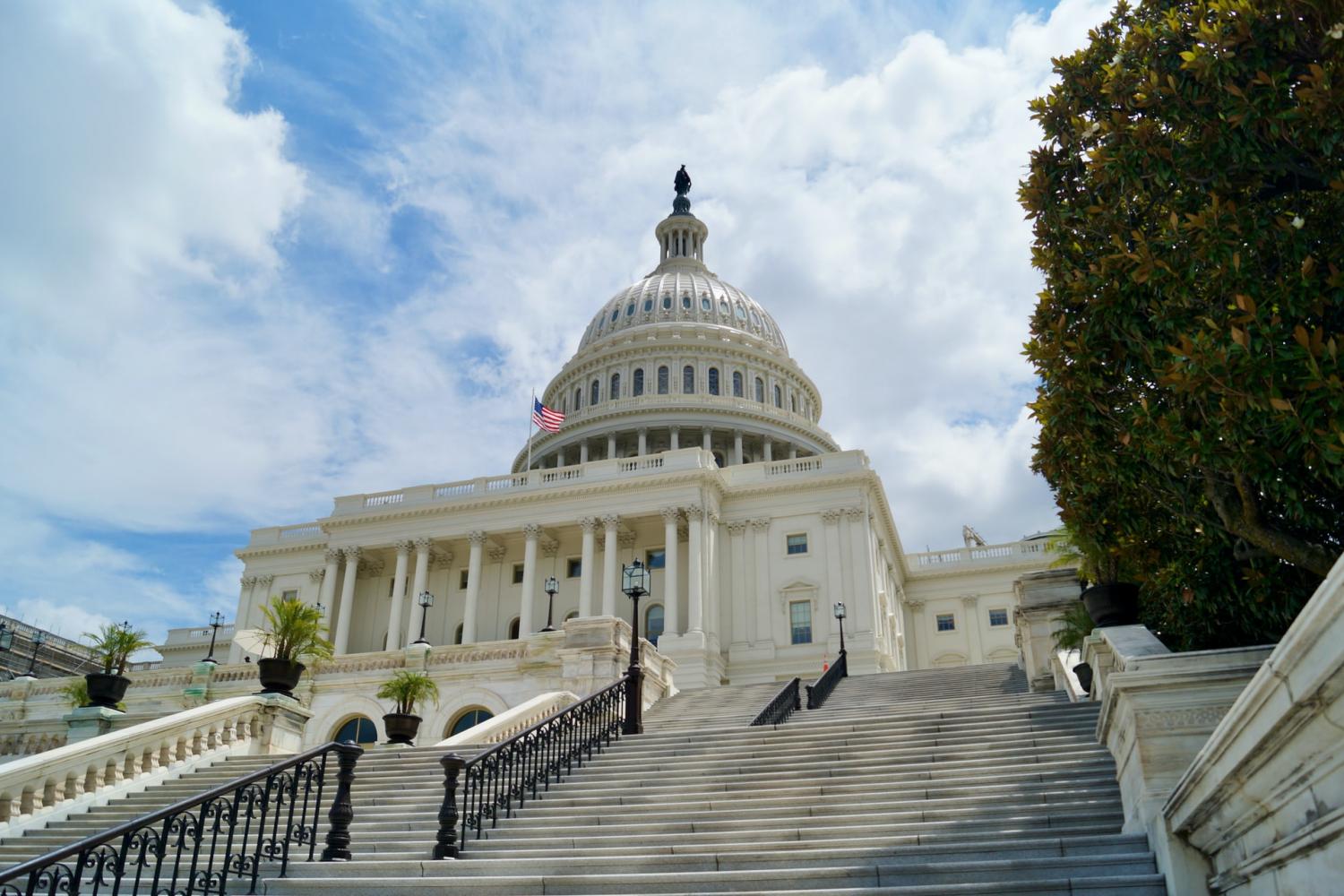
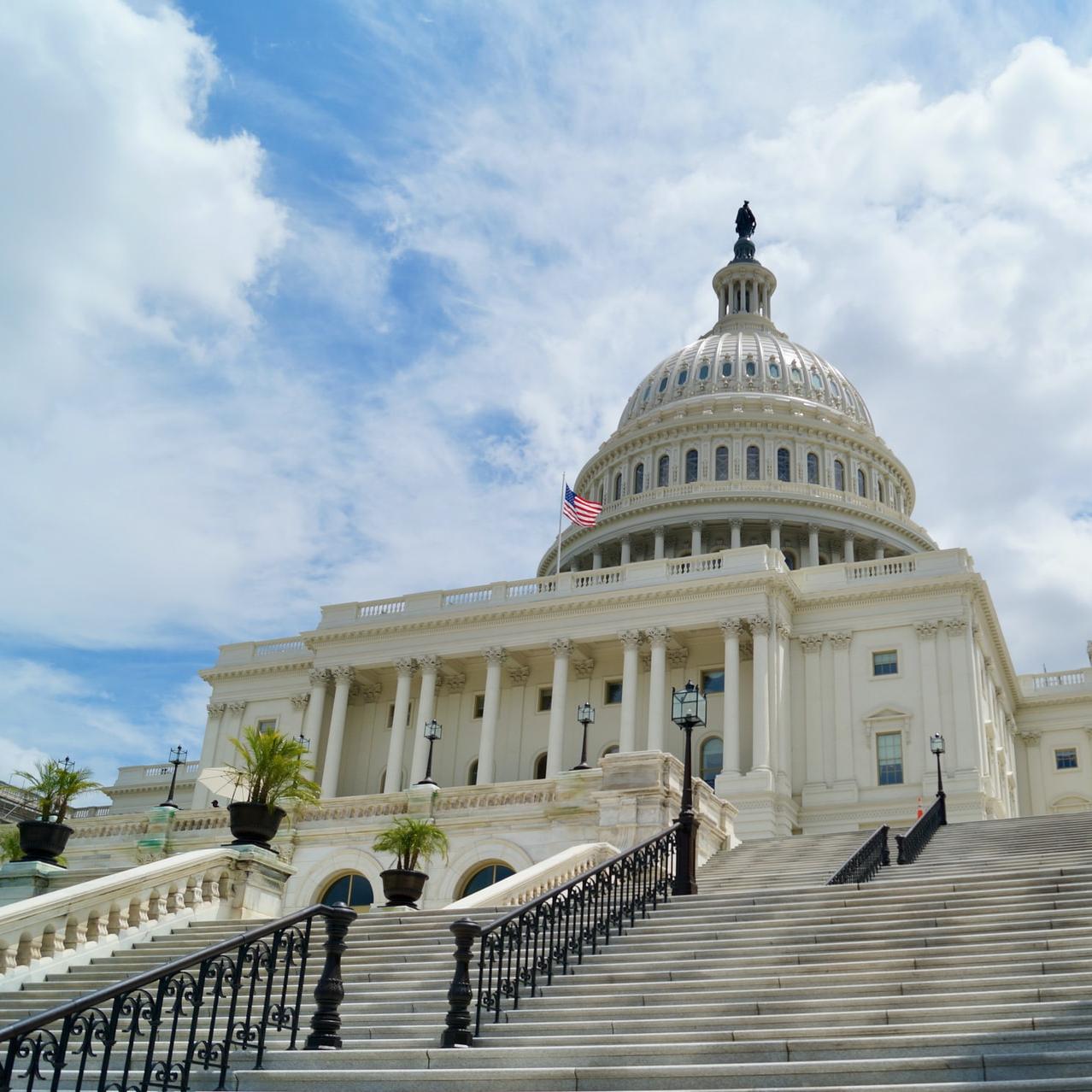
An organized mob of insurrectionists failed to overturn the 2020 presidential election by overtaking the U.S. Capitol and murdering Vice President Mike Pence on Jan. 6. However, there is a Plan B, and voter suppression is central to this plan’s success.
Republican legislators in almost every state have introduced bills that could nullify the voice of millions of Democratic voters. These legislators may need to come up with a Plan C, though. U.S. business leaders helped to turn out record numbers of voters last year, and they are already gearing up for the crucial 2022 midterm elections. The big question is whether or not they choose to leverage the get-out-the-vote power of unions, too.
Protecting voter rights: It’s complicated
The media spotlight on voting rights swung toward Levi Strauss’ president and CEO Chip Bergh earlier this month, when his company issued a statement drawing the connection between the success of corporate get-out-the-vote efforts last year, and the torrent of voter suppression bills sweeping the nation this year.
“Right now, there are more than 350 bills under consideration in 47 states that would make it harder to register, vote by mail or cast a ballot in person,” Bergh wrote. “These bills aren’t only racist; they represent a significant step backward for us here in the U.S., where we saw record turnout in the 2020 presidential election after many states worked to make voting safe and more accessible in the face of the global pandemic.
The statement was noteworthy, as it came at a time when reporters were beginning to expose corporations that profess to support voting rights, but continue to support Republicans who work to suppress the vote.
Apparently, Levi Strauss is not one of them. Less than 1 percent of the company’s spending on individual candidates went to members of the Republican party in the 2020 election cycle, as tracked by the organization Open Secrets.
The limits of the corporate voice on voter suppression
Unfortunately, convincing Republican state legislators to stop voter suppression is an uphill battle. Last month, Major League Baseball, for example, took the dramatic step of moving the 2021 All-Star Game out of Georgia in response to a new voter suppression law. The move was apparently a warning shot to other states considering similar legislation, but the voter suppression movement barely blinked.
Editor's note: Be sure to subscribe to our Brands Taking Stands newsletter, which comes out every Wednesday.
Levi Strauss is a case in point. The company has large operations in Kentucky, where a new voting law passed with bipartisan support. Though the new law includes some reforms, it also rolls back some of the voter-friendly procedures introduced last year, in response to the COVID-19 pandemic. The Republican-held Kentucky Senate also gave itself the power to change statewide election processes in an emergency.
Two other states in which Levi Strauss has a big footprint are Florida and Texas, where much more onerous bills were introduced. As of this writing, both bills are continuing to move through the state legislatures.
Texas is a particularly egregious example. As noted by Vox, voters in Texas already have to negotiate some of the most restrictive laws in the nation, a burden that has an impact on Democratic-leaning populations more than others. The new legislation is specifically aimed at suppressing even more Democratic votes.
“The Senate bill imposes new rules limiting precinct placement that only apply to large urban counties. It punishes county registrars who don’t sufficiently purge the voter rolls, threatening a repeat of a 2019 fiasco in Texas in which nearly 100,000 recently naturalized citizens were pushed off the rolls. And it prohibits practices pioneered in Democratic-leaning counties designed to improve ballot access during the pandemic, like 24-hour voting,” Vox reports.
“The House bill, meanwhile, makes it nearly impossible to kick partisan poll watchers, who have historically been used to intimidate Black voters, out of precincts,” Vox adds.
Corporate leaders gear up to fight Plan B
Altogether, the state-based voter suppression bills have the effect of accomplishing by law what the insurrections failed to do on January 6: silence the voice of millions of U.S. voters, most of whom lean Democratic.
That will make corporate get-out-the-vote efforts all the more difficult during the 2022 election cycle. However, hundreds of businesses have already begun to organize in support of voting rights.
One key organization to emerge is the Civic Alliance. Levi Strauss is one of more than 1,200 corporate members of the Civic Alliance; the company signed on to an Alliance statement on April 2, which called up on elected officials to “work across the aisle and ensure that every eligible American has the freedom to easily cast their ballot and participate fully in our democracy.”
That may sound like weak tea. However, Civic Alliance members collectively have more than 5.5 million employees on their rolls, and millions more voters among their customers and clients.
More to the point, Alliance members have already demonstrated their ability to take concrete, meaningful actions that help more eligible citizens exercise their right to vote.
During the 2020 election cycle, for example, some companies made Election Day a paid day off. Others paid their employees to volunteer as poll workers at polling places or they created voter information and registration portals for customers and clients.
“The Civic Alliance and its business community rallied to champion voter registration, early voting, vote by mail, and civic participation to employees and customers alike - creating a tipping point in corporate civic engagement,” the organization reported after the 2020 election cycle.
The organization provides toolkits to its members, helping to provide them with a head start on effective employee and customer engagement.
In addition, the Civic Alliance offers an open-source toolkit that helps content creators embed the voter engagement message within narrative entertainment as well as news and events programming.
A concurrent effort is the Time to Vote organization, which launched in 2018 with 300 members. By 2020 it enlisted more than 700 corporate members in a pledge to increase voter participation among employees. The solutions ranged from encouraging vote-by-mail and adjusting work schedules, to offering paid time off on Election Day.
The union factor
Corporate leaders who support voting rights may also find new allies in the revival of the union movement. Unions have historically played key roles in get-out-the-vote efforts. Though their numbers have waned, unions and other organizations can still exercise a powerful influence at the corporate and political level. For example, the Major League Baseball Players Association sparked the decision to shift the All-Star Game.
Another interesting development occurred last week, when the United Mine Workers of America issued a statement in support of President Biden’s climate-friendly infrastructure plan. Though the statement advocated for measures to support existing coal jobs, it also endorsed the plan’s emphasis on new jobs along with education, training, and other civic support.
In addition, President Biden has come out swinging in support of unions.
Earlier this week, the President issued an executive order establishing the new White House Task Force on Worker Organizing and Empowerment, to be chaired by Vice President Kamala Harris.
The cabinet-level task force is charged with “mobilizing the federal government’s policies, programs, and practices to empower workers to organize and successfully bargain with their employers.”
The executive order echoes the findings of public health research, which has linked unions to improved living standards for members and non-members alike.
“They have fought for higher wages, greater job security, safety and health laws, essential benefits like health insurance and retirement plans, and protections from discrimination and sexual harassment for millions of workers across the country,” the executive order reads.
To further underscore the connection between unionization and civil rights, the executive order notes that six in 10 of the nation’s 16 million unionized workers are women and/or people of color.
The executive order firmly puts corporations on notice (break added for readability), stating that almost 60 million more workers would join a union if given a chance.
That certainly puts corporate leaders on the spot. Though naturally inclined to dilute the strength of unions, corporate leaders who truly care about ensuring equal access to the ballot should be willing to support candidates for office who support the efforts of the new Task Force.
If they don’t, well, then all this talk about stopping voter suppression is only so much hot air.
Image credit: Samuel Schroth/Unsplash
Business Leaders Are Slow Buying Into Reforms, But Quick to Cash Out


Business leaders made plenty of headlines over the past year as they stood up for Black communities and social justice. In January, many also spoke out while cutting the purse strings to politicians that aligned with voter suppression efforts and the U.S. Capitol breach. But as quickly as these corporate executives took a stand, many were fast to retreat as state legislators across the country became even more emboldened and passed laws that made it tougher for citizens to cast their ballots in elections.
Who’s paying for the infrastructure bill?
In the meantime, even though a solid majority of Americans support the massive infrastructure bill the White House has proposed, the U.S. business community is expressing opposition to any such plan — largely because the bill would ask companies to foot some of the bill through an increase in the U.S. corporate tax rate.
Editor's note: Be sure to subscribe to our Brands Taking Stands newsletter, which comes out every Wednesday.
Here’s the problem: Somehow, all of these infrastructure investments have to be paid for, so look at the broader context. U.S. corporations’ share of contributing tax revenues dropped from 32 percent of all collected federal taxes in 1952 to 10 percent in 2013. Now, according to the Tax Policy Center, that percentage stands at 6.6 percent.
The reality is that corporations would benefit from improvements in the country’s infrastructure, as well as a more skilled and healthy workforce. Nevertheless, many companies and their lobbyists have claimed that the proposed increase in the corporate tax rate, from 21 percent to 28 percent, would hamper the economy and depress wages.
The 2017 tax cuts accomplished little more than stock buybacks
The problem with that economic argument is that the 2017 tax cuts did little but inspire stock buybacks while wages for many workers remained stagnant even before the pandemic hit. And looking at the bigger picture, CEO compensation soared by 980 percent between 1978 and 2019, according to at least one estimate, while rank and file workers’ wages only creeped up 12 percent over the same period.
Jennifer Rubin of the Washington Post, hardly a left-winger, summed it up in a recent column:
“If corporations do not exercise self-restraint and translate platitudes into action, you can bet on a political reckoning. If corporations want to stave off a true populist rebellion, they should consider some self-imposed constraints including significant limits on CEO pay in years of layoffs and economic losses; a permanent cutoff of contributions to anti-democracy politicians; an action plan to support voting rights that includes paid time off to vote, lobbying for the John Lewis Voting Rights Advancement Act and ending financial support for state and federal lawmakers who push legislation that harks back to the days of Jim Crow; and an end to their histrionic opposition to any corporate tax hike.”
Actions are lagging far behind words
Business leaders across all industries have an opportunity to stand up and do what’s right.
State legislators considering laws that would absolve motorists of any responsibility should they “unintentionally” hit protesters? Insurance companies, for example, could at a minimum lobby against such laws or make it clear they would refuse to pay any of these motorists’ claims. On the equity front, companies could make a fundamental commitment to transform their hiring practices, instead of making nebulous promises that would be fulfilled by 2025, and align with local efforts such as the Greater Washington Partnership’s accelerated push to drive inclusive growth.
Instead, we’re seeing companies step back from the bold pledges they made a year ago as they appear chastened by politicians on Capitol Hill — rather than proving they will follow through on their commitments, many of which were financial in nature. Speaking of finances, during a difficult year, hardly any company executives shared in the nationwide sacrifice. Together these actions don’t only make them tone deaf: Companies and their executives can expect more investor revolts in the coming year, too.
Image credit: Romain V/Unsplash
Send Out the Search Party! We Looked for Woke Corporations, and Couldn’t Find Any


Inside the clown car otherwise known as the U.S. Senate, more politicians are blaring the “get woke go broke” mantra at companies daring to speak out on issues such as voter suppression and social justice. First coined by the author John Ringo in 2018, the “woke” catcall has festered from time to time, as supposedly woke corporations like NASCAR made it clear they heard the clangorous demands for racial justice that roared across much of the U.S. last summer.
But there’s one problem with all the accusations that woke corporations threaten to weaken America and destroy society: As with cancel culture, it’s not a thing.
Those pledges to stop political donations after the riots at the U.S. Capitol on January 6? For the most part, corporate donations to the politicians in question have resumed. A leading trade group suggesting the former vice president invoke the 25th Amendment? Well, the same trade group has also sent plenty of checks to politicians who for years looked the other way as democracy was threatened.
If you listened to several U.S. senators over the past week, you would have thought America’s leading companies and brands were morphing into the outfitter Patagonia, demanding dodgy access to the ballot box (and fomenting voter fraud) in the process.
But as independent journalist Judd Legum observed, Patagonia’s loud calls for other companies to fund activist groups pushing back against voter suppression in Georgia and other states, while urging business leaders to support landmark federal voting rights acts (H.R. 1 and the John Lewis Voting Rights Advancement Act), have so far gone unheard. The one exception is film director and producer J.J. Abrams’ production company. If Patagonia thought it would launch a woke brigade, the outcome was that the troops waved the white flag and ran in the opposite direction.
Editor's note: Be sure to subscribe to our Brands Taking Stands newsletter, which comes out every Wednesday.
Even Georgia-based companies like UPS, Delta and Coca-Cola have been relatively silent about the events in Georgia. Sure, the act of issuing a press statement objecting to new legislation may have been unthinkable a decade ago, but considering what’s at stake today, it’s a stretch to label these press releases as bold, decisive action. It’s certainly not the same as a million dollars, which is what Patagonia recently donated to the voting rights efforts underway in Georgia.
This isn’t the first time that fury over accusations of woke capitalism turned out to be a lot of bark with almost no bite.
Two years ago, entertainment companies including Disney and Netflix found themselves in the middle of a controversy over a new anti-abortion law passed in Georgia. Both companies spoke out against the law and at the time suggested they’d take their business elsewhere.
But as columnist Alyssa Rosenberg of the Washington Post noted, the reality surrounding both companies appeared far more complicated when looking beyond the Georgia state line. One company was considering opening a branded property in Saudi Arabia despite its human rights record, while another pulled an episode from its streaming service after the Saudi government requested it be taken down so viewers in the kingdom wouldn’t see it.
Those two examples are only the entryway by which we could fall into this woke corporations rabbit hole. For example, if you had stumbled upon a documentary on the toxicity of social media on a certain streaming service, the chances are high that it was because one of its algorithms led to that film becoming a suggested watch for you — incidentally, similar algorithms can be found within social networks such as Facebook.
This isn’t to say companies aren't inherently good, bad or politically correct. But they do maintain an unenviable, delicate balance on how their business portfolios align with the demands and beliefs of their stakeholders. Hence, go ahead and call how companies are managing all of this whatever you wish: stakeholder engagement, hypocrisy, pragmatism, goodwill or even looking out for intangible assets such as brand reputation.
Describing these companies as woke, however, is a stretch. Woke companies simply don’t exist. And that includes Patagonia — which, as is the case with its competitors, has faced its own struggles on the diversity and inclusion front.
Image credit: Pixabay
Wellbeing is As Important As Safety in a Post-COVID Workspace, Employees Say


The end of the COVID-19 crisis is finally coming into view, but its disruptive impact on the U.S. workforce is only just beginning to take shape. In one especially significant development for employers, the struggle to recruit and retain top talent has intensified. The fresh wave of competition is not simply a matter of which company can offer more financial rewards. According to a new survey from Armstrong World Industries, successful employers also need to pay much closer attention to the connection between a workspace and overall wellbeing.
Workspaces do not exist in a vacuum
The connection between workspaces and employee satisfaction should be an obvious one. Although many jobs are physically walled off from the world, broader trends and occasional crises can have a significant impact on the way employees feel at work. Forward-thinking employers have already absorbed this lesson, at least in part.
One good example is the sustainable building trend, with an emphasis on healthful indoor air quality, daylighting, natural materials and green spaces. A growing number of workspaces are also incorporating areas for play and relaxation, a trend most famously spearheaded by tech firms seeking to encourage behaviors that stimulate creativity, teamwork and innovation.
Employers that invested in more healthful, sustainable and enjoyable workspaces early on may be better prepared to address worker concerns in the wake of COVID-19 today.
After COVID-19, a return to normal is not enough
As a leader in the building materials sector, Armstrong is naturally interested in the trends and circumstances that motivate employers, lease holders, and property owners to redesign the work environment. Part of that is simple common sense, as in the case of adjustments to prevent COVID-19 transmission in workspaces, but Armstrong’s latest research indicates physical safety is only the start of what employees expect.
Armstrong’s survey examines how workers in offices, schools and medical facilities view their employers' responses to COVID-19. The findings draw a portrait of a workforce that is well aware of the disconnect between past practices and the increasingly complex, changing and challenging world around them — in and out of the workspace.
In particular, the survey suggests that workers value overall wellbeing practically as much as they value physical safety and security. Regarding the overall work environment, 86 percent of respondents expect to feel “very or somewhat safe in their workspace” upon return to work after the pandemic. Beyond that, 84 percent said they expect their employer to deliver a workspace that supports personal wellbeing.
The concern for overall wellbeing also lines up with the 83 percent of respondents who expect their companies to be more prepared for future crises, such as climate change or another pandemic.
“The findings are reflective of the pandemic’s influence in heightening awareness and understanding of the importance and interconnectivity of healthy environments and one’s own personal environment,” Armstrong said in a statement.
The workspace as an asset
The survey provides a roadmap for companies that appreciate the need for a holistic approach to the indoor workspace — and it teases out two broad conclusions that employers should keep in mind when working with architects and designers.
First and foremost, employers need to recognize the importance of investing in workspaces and treating them as assets that can attract and retain workers who are educated and aware. The COVID-19 pandemic has sparked a swell of enthusiasm among the public for learning, sharing information, and keeping up with the news. Talented workers expect their employers to be just as informed, educated, responsive and adaptive. That includes responsiveness to future crises and trends, as well as the current pandemic.
Second, this heightened awareness should be reflected in bold action. It is not enough for employers to vocalize their awareness of worker expectations. Companies need to assess their work environments and adjust them in accordance with their employees’ expectations. They should strive for workspaces that enable their employees to feel as safe and comfortable as they do at home.
Raising the bar to meet worker expectations
Armstrong underscores that worker wellbeing and building sustainability are complementary. In that regard, the corporate social responsibility movement has also become an employee recruitment and retention movement. Companies taking meaningful action on social and environmental issues have an edge in today’s workforce marketplace — and that starts with setting clear goals and taking steps to achieve them.
That lesson applies to Armstrong itself, as well. Through its 2030 goals, the company aims to “cultivate thriving environments for employees and communities, more actively meet demands for healthier, circular products, and do more with less to preserve and protect the planet’s resources.” Environmental goals include specific commitments to source ethically and environmentally responsible materials, as well as targets for lifecycle sustainability, carbon reduction, and water conservation.
The message is that investing in a more holistic approach to the workspace is an essential step in the race for top talent, but it is not the only step. Companies that are fully engaged in the social responsibility movement will also have a long head start on the competition as the U.S. emerges from the COVID-19 pandemic.
This article series is sponsored by Armstrong World Industries and produced by the TriplePundit editorial team.
Image courtesy of Armstrong World Industries
Honda Plans to Go Zero-Emissions By 2040
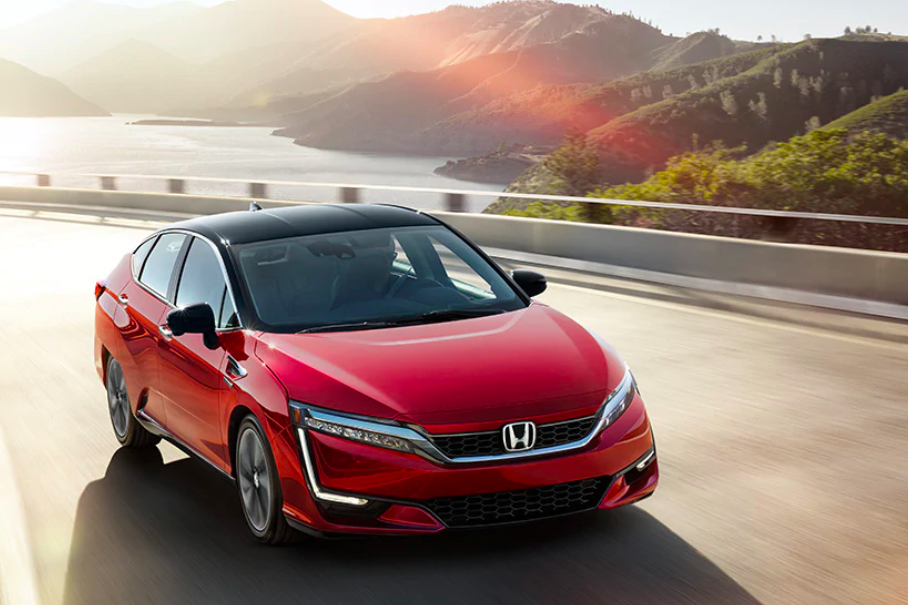
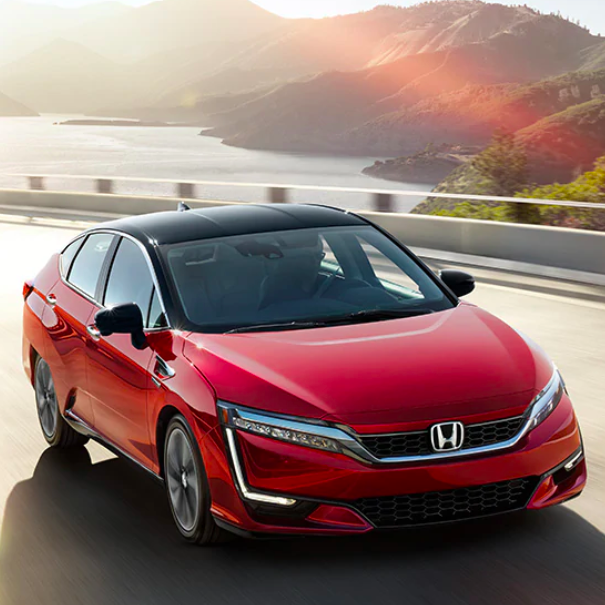
It’s probably only a matter of time before all global car manufacturers set a self-imposed deadline for phasing out the internal combustion engine in favor of a zero-emissions future. Last week, Japan’s Honda joined the growing list of brands which have already set a specific time horizon for weaning themselves off fossil fuels.
Honda says it will stop selling gasoline powered vehicles entirely by 2040, while setting interim goals along the way. By 2030 it expects 40 percent of global sales to be battery electric, or fuel cell vehicles, rising to 80 percent of sales by 2035.
Furthermore, by 2050 the company’s new CEO, Toshihiro Mibe, said Honda would “strive to realize carbon neutrality for all products and corporate activities.”
Playing catch-up when it comes to electric vehicles
With the notable exception of Nissan, which introduced the electric LEAF over a decade ago, Japanese car giants like Toyota and Honda are playing catch-up when it comes to a commitment to all-electric vehicles. In a way this is surprising since both companies were the first-movers in fuel-efficient gasoline-electric hybrid technology.
The success of Toyota’s Prius is a testament to the fuel-efficiency opportunities hybrids brought to car owners around the world. But as with Toyota, Honda saw greater potential in hydrogen fuel-cells than battery-electric vehicles: a technology, which so far, hasn’t gained significant traction.
That’s not to say Honda hasn’t dabbled with EVs, too, in the past but it has never really demonstrated a particular strategic approach to the technology before. In 2014, Honda adapted its globally successful subcompact hatchback car, the Fit, and introduced an all-electric version, exclusively leasing 1,100 of them in a handful of U.S. states. Though a competent enough offering for the time, it was essentially a “compliance car,” built to meet California’s zero-emissions vehicle mandate and by now, they’ve all been subjected to a recall.
More recently, Honda sold an all-electric version of its larger Clarity model but axed the EV only variant for model year 2020, quite possibly due to its lackluster 89-mile range, one entirely inadequate by current standards. Today, the Clarity lives on as a plug-in hybrid and, staying true to faith, as also a fuel cell-powered car (shown above).
In other markets last year, Honda launched the cute E city car, which unfortunately U.S. buyers won’t be able to get their hands on. Though it could have done well in the U.S. within certain urban centers, it most likely wasn’t destined to come to these shores due to its limited range and diminutive packaging.
So, the bottom line is that Honda currently doesn’t sell an EV in North America.
Honda to kick-start EV push with GM partnership
In order to recover ground in North America rapidly, Honda’s new strategy in the EV market will see the release of two SUVs for the 2024 model year. One will be sold under the Honda brand, while the other will wear the company’s premium Acura logo. In both cases, Honda will partner with General Motors for these vehicles, which will utilize GM’s Ultium EV platform.
Thereafter, Honda expects to develop its own EVs towards the late 2020s under their so-called e:Architecture platform. At least 5 trillion Yen (46-plus billion dollars) of investment will be directed towards Honda’s electrification and fuel-cell technology over the next six years as the company moves towards its 2040 goal.
A part of this effort will also focus on Honda’s motorcycle portfolio, where the company plans to invest in motorcycle electrification, too. This could be hugely impactful in global markets where motorcycles offer essential transportation opportunities for large urban populations.
What a difference two years makes
Notably, this new electrification push by Honda shows a significant course correction for the company. Less than two years ago, Honda’s former CEO, Takahiro Hachigo, said in an interview with Automotive News that EVs will not become mainstream anytime soon. Arguably, full electrification by 2040 is not imminent; after all, it’s still 19 years away. But two years on from this reticent position, and with new leadership in place, the company clearly understands it needs to rapidly make plans for the global shift to EVs.
Image credit: Honda Clarity web site